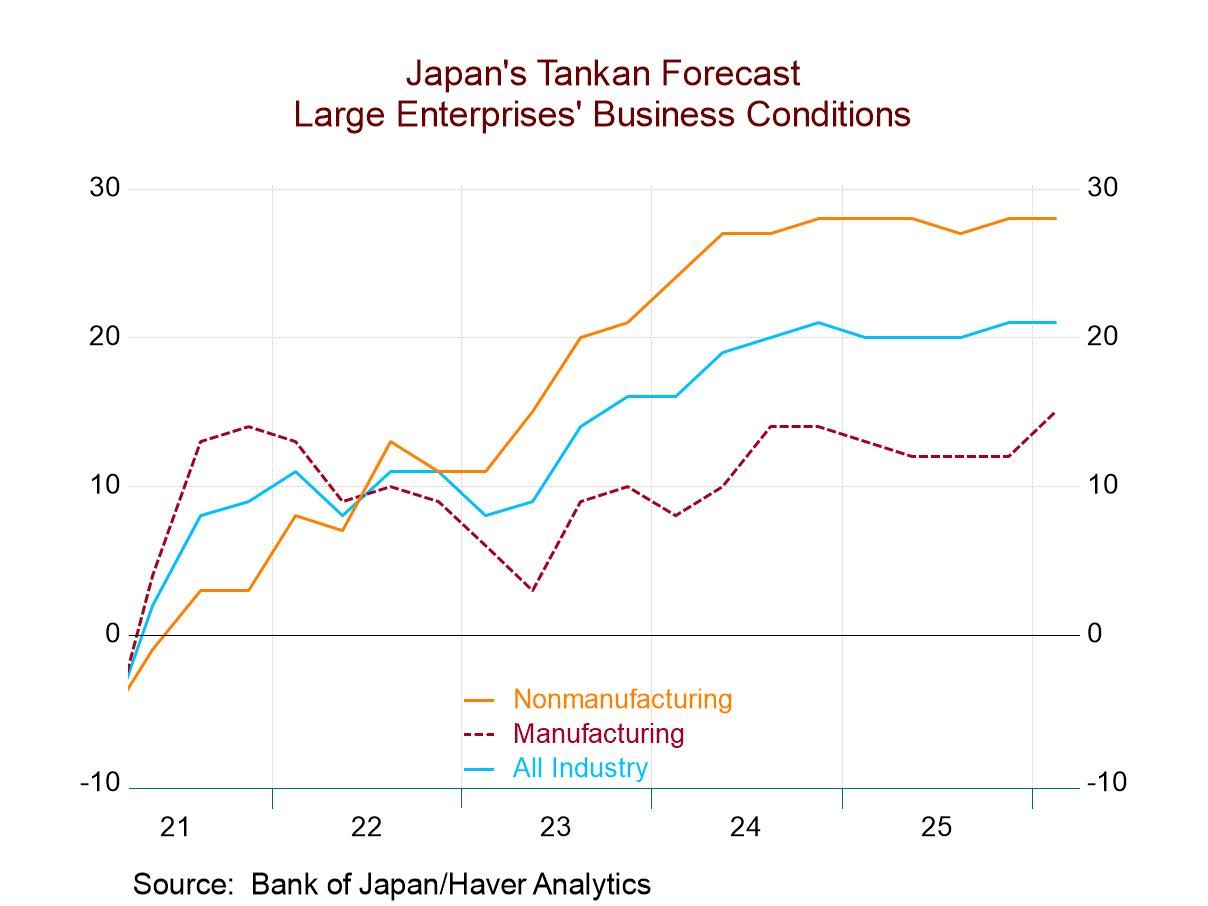 Global| Feb 10 2023
Global| Feb 10 2023Charts of the Week (Feb 10, 2023)
by:Andrew Cates
|in:Economy in Brief
Summary
Last Friday’s much stronger-than-expected US jobs report has set the tone for financial markets in the past few days. But it has not yet meaningfully derailed the more upbeat narrative concerning inflation and monetary policy that’s been in vogue since the start of this year. Our first few charts this week chime with the idea that inflation is rolling over and that tighter policy settings are taking a toll. Business sentiment data, however, are now exhibiting an unexpected improvement as we illustrate in our fourth chart. This improvement stands in contrast to harder (albeit more backward looking) data for industrial production, which we underscore in our next chart. Lastly the UK has been a notable underperformer on the industrial production front in recent years, so we dig a little deeper into its relative performance in our final chart this week.
Inflation surprises As noted, one key source of optimism about the economic outlook concerns inflation. Having peaked in Q2 last year, Citigroup’s inflation surprise indicators have now been in retreat for several months. Inflation outcomes in other words have been surprising forecasters on the downside far more frequently, particularly in emerging economies (see chart 1 below).
Chart 1: Citigroup’s G10 and Emerging Market Inflation Surprise Indices

US bank lending standards Evidence is accumulating too to suggest that tighter Fed policy is slowing the wheels of credit in the US economy. This week’s Senior Loan Office Opinion Survey for January suggested there has been a broadly based tightening of bank lending standards and a big weakening in demand for new credit. In chart 2 below we illustrate this via some unweighted averages of the proportions of banks that are a) tightening standards for both corporate and household lending categories and b) reporting weaker (or stronger) demand.
Chart 2: US Senior Loan Office Survey: Lending standards versus credit demand

The RBA The Reserve Bank of Australia (the RBA) raised its policy (cash) rate by 25bps to 3.35% this week, extending its run of rate hikes to nine meetings in a row. While high domestic inflation was cited as a key reason, the RBA is of course responding to the same global forces that have been generating tighter monetary policy in other major economies. Indeed, given its commodity price dependency, Australia’s economy is typically highly sensitive to global business cycle fluctuations. This is evidenced by the very tight correlation between its domestic rates and policy rates in other advanced economies in chart 3 below.
Chart 3: Australia’s policy (cash) rate versus global (ex US) policy rates

The global business cycle This week’s sentix surveys for February suggest that investor sentiment has continued to improve in recent weeks. Indeed the forward looking expectations components of many of these surveys (which encompass the US, Europe, Asia, Eastern Europe and Latin America) exhibited a much stronger-than-expected climb. A business cycle clock for the global aggregation of this survey suggests an upswing in the global economic cycle, as evidenced in chart 4 below. Sentiment surveys, however, have not enjoyed a very tight correlation with harder data for e.g. industrial production, retail sales and broader rates of GDP growth in recent months.
Chart 4: The global sentix surveys: a business cycle clock

Industrial production in advanced economies That previous point was reinforced this week by much weaker-than-expected industrial production data from Germany. Production specifically slumped by 3.1%m/m in January to its lowest level since August 2020. From a slightly longer-term perspective Germany’s industrial production has been relatively weak compared with other advanced economies in recent years (see chart 5 below). Some of this under-performance can be traced to its relatively high exposure to Russian sources of energy supply and to China.
Chart 5: Levels of industrial production in major advanced economies

The UK and Brexit Chart 5 above also suggests that industrial production in the UK has under-performed relative to other major economies, including Germany, over the past few years. Could Brexit have been to blame? The debate on this question has become more active (and heated) in recent months sparked by growing economic, political and social instability. On the economic front, the evidence is becoming more damning. For example, UK export volumes to the EU remain below where they stood prior to the EU referendum in mid-2016. Business investment volumes are also below those mid-2016 levels and well below similar rates in other major economies (see chart 6 below).
Chart 6: UK exports to the EU and business investment volume from 2016

Andrew Cates
AuthorMore in Author Profile »Andy Cates joined Haver Analytics as a Senior Economist in 2020. Andy has more than 25 years of experience forecasting the global economic outlook and in assessing the implications for policy settings and financial markets. He has held various senior positions in London in a number of Investment Banks including as Head of Developed Markets Economics at Nomura and as Chief Eurozone Economist at RBS. These followed a spell of 21 years as Senior International Economist at UBS, 5 of which were spent in Singapore. Prior to his time in financial services Andy was a UK economist at HM Treasury in London holding positions in the domestic forecasting and macroeconomic modelling units. He has a BA in Economics from the University of York and an MSc in Economics and Econometrics from the University of Southampton.






